Posted: March 15th, 2018 | Author: Nathan | Filed under: modular synthesis, music, synthesis
“I just bought [FOO]; what other modules should I buy to go with it?”
Ahh, the cliché question that causes cringes worldwide in the modular synthesis world. But let’s not disparage those who are just learning. We were all there once, right? I sure was. Heck, I still am.
But what bothers me about this question is that it is absolutely context-free.
If you said that you had a saw, and you wanted to know what wood would pair well with that saw, I’d best the most common question you’d get (besides a quizzical look) is, “Well, that depends. What are you building?” Asking what tools or materials to get without knowing what the end goal is feels completely backwards.
Let’s say someone bought a smart, complex envelope generator. Great, such things are always needed in modular synthesis. But then someone asks what to get next, be it an oscillator, a sequencer, a filter, or an effect. Well…are you a harsh noise artist? An ambient performer? A techno producer? A sound designer for film? A guitarist trying to use modular for effects? A trumpet player looking for procedural beats to play on top of? A sound installation artist?
Those answers don’t just matter. They’re ALL that matters.
This, of course, applies to microphones for field recordists, traditional synths for other musicians, or string gauges for guitarists. My advice is always, and will ever be, this:
Listen to your own music with what you have, and it should tell you what you need.
- Does it sound thin, or do you feel like you want more layers? Oscillators and sequencers and VCAs and filters and effects…or some/none of them. Depends on what you want to hear in the mix, and what you’re trying to say.
- Does it feel repetitive or too simple? Modulators and VCAs, possibly some randommess.
- Does the sound seem too dry or stale? Modulators, filters, and effects.
- Does the sound want more high-level structural changes? Modulators that can transpose, VC mixers for either/both audio and control voltage. LFOs and envelope generators that have very long cycles are great for that, too.
- Did you get a few modules but you feel like you need more control? Attentuators, modulators, VCAs.
- Do you want the machine to generate audio on its own? Envelope generators with end-of-rise/fall trigger outputs, maybe a quantizer, LFOs, comparators, random sources.
This is a radical oversimplification, but no single person’s advice is going to tell you the right next module(s) for you. Your system, studio, or mic locker will be far more effective (musically, and in terms of cost) if you know what you’re trying to achieve first.
| No Comments »
Posted: October 2nd, 2016 | Author: Nathan | Filed under: music, synthesis

Beelzebuzz on the bus!
I spend between two and three hours a day on a bus. I’m not proud. But one learns to adapt. And in that adaptation, surprising discoveries come about.
In my case, I rediscovered a love for an often-maligned audio application, and learned a ton about modular synthesis while riding over the Golden Gate Bridge ten times a week…one that ultimately led me to invest in modular synthesis hardware, which was the subject of my previous post. But if you’re curious about modular synthesis, for real, doing it in software first can be pretty darned smart. And cost-effective.
When I revised my studio hardware late last year, I decided that a MacBook Air would be a part of the mix. What a revelation that’s proved to be! So small, so light, and – even in its dinkiest incarnation – just as powerful as the older “proper” laptop it replaced. But as a guy who loves field recording, found sounds, and sound design, how could I use this tool on the bus creatively? Surely there must be a good way for me to spend time on my commute learning something. And I learn best through doing.
I explored what skills I could build on my bus ride to and from work, and decided two options existed: Learn more about music composition and theory, and learn synthesis at a seriously deep level. Being that the bus is a horrible listening environment, and I won’t ever be That Guy that brings a keyboard controller on his commute, I opted for the latter.
I forgot that I had a working, real license of Propellerheads Reason, sitting uninstalled. So I installed it on the MacBook Air and decided to set a few goals for myself.
- No playing through the MIDI keyboard, and no MIDI notes entered on a piano roll. All sequenced as if on a modular synth.
- No presets, ever. Clear all the settings (or find the most raw one) and always start with that.
- Don’t stop until you can create at least the standard drum sounds, bass, leads, and pads using subtractive synthesis.
- Don’t stop with just simple pure tones. Modulate everything so that it lives, breathes, and has some motion or unpredictability to it, even if it’s subtle.
I’ve become a solid user of analog synths over the years, but never directly set myself to learning them so deeply. Suddenly the “pre-wired” nature of Reason’s Subtractor synth became stifling, so I started using synths just for their filters or LFOs and patching them with other synths. Then I got a number of super-raw, purely modular Reason Rack Extensions from Ochen K. And then I started to get more parametric, procedural, and probabilistic sequencing Rack Extensions. My wallet was happy that I wasn’t buying modular synth hardware…but, of course, that came to a screeching halt.
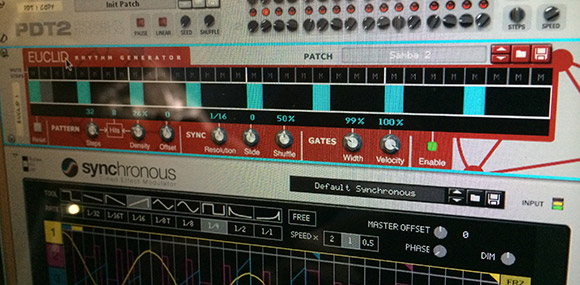
Probability-driven drums, Euclidian synths, and waveform-controlled gates and velocities. Oh my.
Things got mathy quick. I have hours’ worth of glitching, burbling, super-weird virtual analog sounds and textures. If anyone ever needs alien telemetry sound effects, I’ve got a lifetime’s worth. (Pro tip: Throwing these aggressive textures into iZotope Iris is a whole other way to waste an entire day in sound heaven.)
But glitch, noise, and analog freakouts, my friends, are really relatively easy to do (and like many things, doing them extremely well is very labor intensive). Making melodic, rhythmic things in a modular way that don’t loop, per se, but yet still hold together over time…that’s even trickier. Focusing on that process really filled in my gaps in my synthesis knowledge. My main workflow now is sketching on the bus, tone sculpting once I’m in a better listening environment, and then rendering out stems of performances or patches for further work in a more traditional DAW. There, I often find that using a subtle tape saturation effect and physically-modeled compressor plugins can help bring in some of those overtones that analog gear is so renowned for.
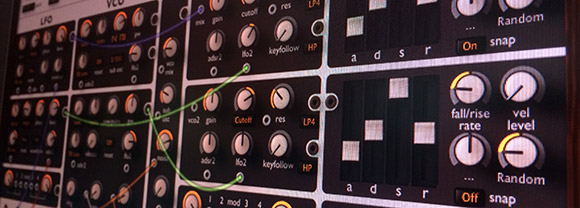
Surprisingly few pro applications and virtual instruments offer the patching options of Reason and its modules. Here, U-He’s ACE semi-modular virtual synth bucks that trend. Madrona Labs’ Aalto is also superb.
And yet there, back in my powerful traditional DAW, I find myself missing all those little CV ports in Reason, allowing me to modulate anything with anything. Why can’t I take the pitch CV of a synth plugin and use it to modify a delay time parameter? Or use a buffer override or stutter plugin to retrigger an envelope generator? You can simulate these things with MIDI processors but it’s just not the same.
Suddenly my little MacBook Air feels like the world’s smallest, lightest, and maybe cheapest modular synth around. (Note that I didn’t say “best.”) If any readers are considering building a modular synthesizer, you could do a lot worse than learning your way around modular synthesis with Reason…since it costs the less than many single Eurorack synth modules.
Today’s sound combines edits of live programming and performance with machine-driven sequences, all centered around things made on my commute. What parts of your day could be more effectively used for focusing on creative pursuits?
[soundcloud url=”https://api.soundcloud.com/tracks/214330829″ params=”color=ff5500&auto_play=false&hide_related=false&show_comments=true&show_user=true&show_reposts=false” width=”100%” height=”166″ iframe=”true” /]
| No Comments »
Posted: May 31st, 2016 | Author: Nathan | Filed under: music, news, synthesis
DRIFTER – Album Teaser from Noise Jockey on Vimeo.
The second in a trilogy of albums, Nathan Moody’s Drifter LP is now available as a digital download (Bandcamp, iTunes, and Amazon) and a limited edition of 100 signed and numbered compact discs.
Drifter is a more ethereal journey than his last album, Dissolver, with fewer beats but Moody’s signature balance between sound design and music. This makes it even more cinematic in mood. Its compositions are looser, often based on improvisations with field recordings, synthesizers, and guitar.
Nathan Moody – “Earthly Disappointments” music film, from the Drifter LP.
The upcoming Deceiver album will complete Moody’s trilogy later this year.
Comments from early listeners include:
“I was pleasantly unsettled by Drifter”
“Beautiful textures and tones throughoutâ€
“It comes across as more confident, forward and assured”
“It’s simply beautiful.”
For more on the release of the Deceiver album this fall, stay tuned to music.noisejockey.net, noisejockey on Twitter, and noisejockey on Soundcloud.
| No Comments »
Posted: April 19th, 2016 | Author: Nathan | Filed under: music, news, sound design, synthesis
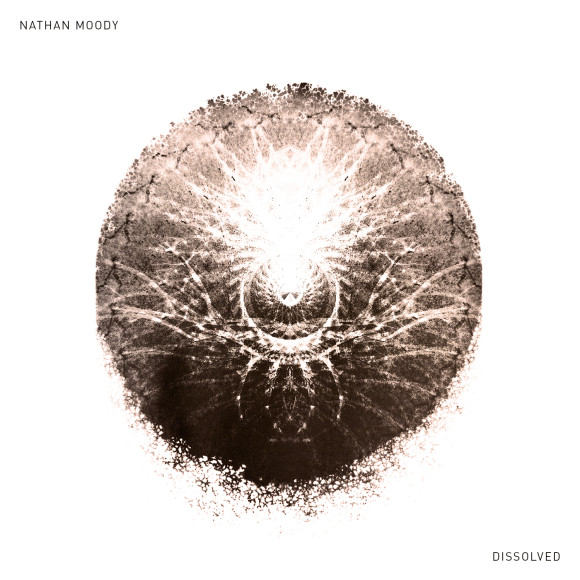
Following 2015’s full-length album, Dissolver, I’m happy to announce the release of Dissolved, an EP with remixes by musicians from around the world. The US is represented by A Box in the Sea (WA), The Sight Below (NY), and r beny (CA); other contributors include The Heartwood Institute (aka Jonathan Sharp, UK), Hainbach (DE), and Fake Empire (NZ). The remixers’ techniques were as varied as their locations, from DAW-based arrangements to use of vintage hardware to recordings using dictaphones. The pieces exhibit a similar range of moods and styles as the original Dissolver LP, from lilting to tense, ambient to percussive, experimental to melodic.
Mastered by Rafael Anton Irisarri at Black Knoll Studio, Dissolved is available now via Bandcamp as a pay-what-you-like release.
| No Comments »
Posted: September 14th, 2015 | Author: Nathan | Filed under: music, news, sound design, synthesis

My first full-length album is available today.
I’m thrilled to announce that the first album I’ve released under my own name, Dissolver, has been released. It is available now as a digital download on Bandcamp (with PDF booklet with additional artwork and liner notes, exclusively available on Bandcamp). You can also buy it as a digital album on iTunes, Amazon, and Google Play.
I produced all the music and artwork, and it was mastered by Rafael Anton Irisarri at Black Knoll Studio. You can read more about this release at this blog’s sister site, music.noisejockey.net.
Work is already afoot on another releases, so stay tuned here, Bandcamp, Twitter, Soundcloud, and Instagram. Until then, please enjoy the noise, and reach out with what you think of Dissolver.
| No Comments »
Posted: July 11th, 2015 | Author: Nathan | Filed under: gear, music, sound design, synthesis
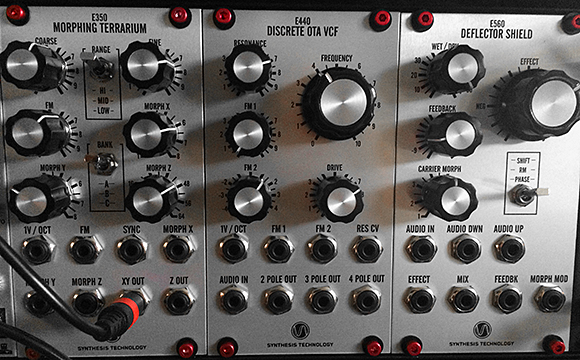
The joys of knobs. And patch points. And empty bank accounts.
While this may be old news to my followers on Soundcloud, Twitter and Instagram, I’ve configured my first Eurorack-format modular synthesizer. These cabled amalgamations of faceplates, cables, circuits, and glowing LEDs are desirable, fetishized, addictive, and steeped in history. But, really, they’re just tools.
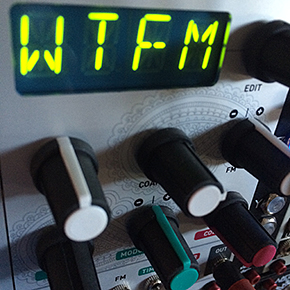 But what tools they are. Modular synthesizers are no longer relegated to the dustbin of history, nor an underground elite (as well documented in the excellent documentary, I Dream of Wires). They have come roaring back, arguably leading the way in technical synthesis innovation, and are a commonplace instrument in many studios. This boom has even gotten the heavyweights of mass market synthesizers, like Roland, to (re)release Eurorack modules, and pop musicians like Martin Gore to release all-modular electronic albums.
But what tools they are. Modular synthesizers are no longer relegated to the dustbin of history, nor an underground elite (as well documented in the excellent documentary, I Dream of Wires). They have come roaring back, arguably leading the way in technical synthesis innovation, and are a commonplace instrument in many studios. This boom has even gotten the heavyweights of mass market synthesizers, like Roland, to (re)release Eurorack modules, and pop musicians like Martin Gore to release all-modular electronic albums.
Everyone’s path to modular synthesis is different, as is mine. But why did I go modular? How did I even know where to begin? And how can I hope to stem the addictive nature of constantly adding low-cost modules, which leads it to be known as “Eurocrack?”
Embrace Limitations
It’s tempting to just buy flavor-of-the-month new products, but that way lies financial ruin and a studio full of stuff you don’t use. The way to stem the financial bleed and random module selection is to place limitations on the process. For me, the limitations were as follows.
- I’ve got a significant investment in existing software and hardware that I want to honor and leverage, not duplicate. I’m designing an additional instrument, not building a new studio.
- I have limited physical space in my home studio. Therefore my case will be on the small side, and that will enforce limits on the number of modules I can purchase.
- I will “version” the modular synth and roadmap it, as if I was designing an actual instrument or a piece of software. I will buy modules in two initial rounds: v0.5 to instantiate the most basic system to ensure that the workflow and gestalt of modular synthesis does actually speak to me, and then a v1.0 that I will live with for a year. Only after user testing – my own, of course – can I roadmap a meaningful path to a v1.5, v2.0, and so on.
[soundcloud url=”https://api.soundcloud.com/tracks/209374238″ params=”color=ff5500&auto_play=false&hide_related=false&show_comments=true&show_user=true&show_reposts=false” width=”100%” height=”166″ iframe=”true” /]
Everything’s a Design Problem
I’ve spent my career breaking down everything, from human relationship challenges to sound design, as a set of design problems. This helps frame the real problem so that solutions are more meaningful. So, I asked myself: What’s the problem I’m trying to solve, or am I just lusting after gear? (Spoiler: It’s both!)
- My current system lacked in two key areas: complex modulation options and the ability to support serendipity. My existing tools didn’t have much in the way for allowing for happy accidents, randomness, and cross-modulated signals and patterns of control. When my most interesting and complex synthesized rhythms and timbres I was creating were coming from Propellerhead Reason during my morning bus commute, I knew something was missing in my main studio.
- Software is an expense, hardware is an investment. Software suffers from instability and, over the long haul, the danger of becoming incompatible that many hardware units do not.
- I’ve already been enjoying workflow of using external hardware as sound sources and then post-processing them digitally, or the other way around.
With the above considerations, the idea of a flexible, modulation-rich instrument to add to the stable seemed to make sense.
Plus: Blinky lights.
[soundcloud url=”https://api.soundcloud.com/tracks/204513759″ params=”color=ff5500&auto_play=false&hide_related=false&show_comments=true&show_user=true&show_reposts=false” width=”100%” height=”166″ iframe=”true” /]
Create Rules of Engagement
Modular synths are, well, modular: Flexibility is what they’re all about. But you are building your own instrument. Without a sense for what you want to accomplish, you’ll overspend and not get what you really need…and, more dangerously, you won’t know when you should stop buying modules. Most of us don’t have the disposable income to buy modules willy-nilly.
Here were my rules of engagement for assembling my modular synth. These will change over time, but it helped me understand what the first iteration of this instrument would be. I wrote these down and re-read them any time I started to think about adding a new module.
- No analog oscillators. While that may seem against conventional modular wisdom, I have a total of ten analog oscillators across four other devices. I’ve got this covered. Go for something really unusual as a sound source.
- No effects. I know that even if I monitor a track with effects on, I always record dry and have effects as plugins or rendered to separate tracks. I use tons of plugins and stompboxes: I have effects covered already.
- Go nuts with modulation. Having enough tools to generate and modify clock signals and control voltages will be critical, because I don’t have digital tools that excel at this. Get more modules that control modulation than produce sound (or, ideally, ones that can do both).
- Don’t forget the DAW. I’ve got a significant investment in a computer-based audio workstation that should be leveraged, so ensuring that modulation and clock signals can drive the modular was critical.
- Embrace multi-tracking. Look at the modular as a sound design station, instrument, or voice, not as a complete studio. Get enough expressive options to do drones, melodies, and unusual percussion…but I don’t have to do all these things at once. That also means no more than 2 channels in or out of the modular synth.
[soundcloud url=”https://api.soundcloud.com/tracks/204871725″ params=”color=ff5500&auto_play=false&hide_related=false&show_comments=true&show_user=true&show_reposts=false” width=”100%” height=”166″ iframe=”true” /]
The Result
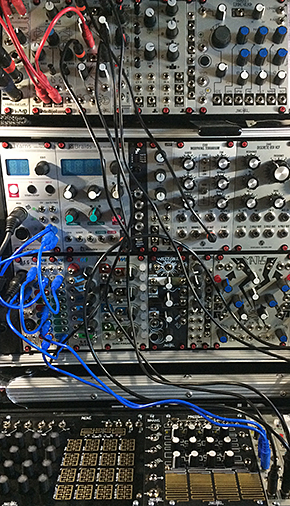
You can read all the key specs on my modular synth, its output and effects subrack (told you I’d break some rules!), and its “controller skiff” on ModularGrid.net, so I won’t geek out about it here. So far, though, so good.
- There’s nothing mysterious about putting a modular together or how it’s used, as long as you have a good grasp of signal flow inside a typical synthesizer. It doesn’t really take any other technical skills other than using a screwdriver, reading directions, and doing simple math around power consumption.
- I’ve got solid sync with my DAW.
- I’ve got an instrument that can do things none of my other instruments can, and vice-versa.
- I’ve got methods to interface with effects pedals, external semi-modular instruments (even with different interconnects), my DAW, and even my iPad. It’s deeply integrated into the rest of my studio.
- It’s small. Full, but small. It’s even able to be self-contained if I decide to embrace limitations and create sounds or music only with this instrument outside of my studio or otherwise away from my DAW, even with my vintage Roland TR-606 drum machine.
- It’s capable of percussion, melody, and drones that can modulate in complex and random ways over seconds or many minutes.
- Modular users have a reputation for noodling and sound designing, but never actually completing songs or projects. It’s like an aural sandbox. The satisfaction of signal routing is autotellic: It’s its own reward, constant discovery and following or rejecting conventional wisdom. It’s also extremely meditative once you’re past the initial learning curve.
- I’ve already broken the “no effects” rule, but only with modules that can be “self-patched” and act as sound sources in their own right.
- Even having only purchased digital oscillator modules, analog modulators like LFO’s can often be used as analog oscillators when they are pushed into the audible range, as can filters that self-oscillate when their resonance is set high. I even wound up with four analog oscillators without knowing it.
- Once you realize that anything can be routed into anything, all synthesis rules go out the window. LFOs and filters can be oscillators, as mentioned above, but clocks can be triggers, envelopes can be clocks, envelopes can be LFOs, audio amplitude can modulate anything…that’s the mind implosion and creativity that modular synthesis brings.
Over time, will I jettison older gear and go all Eurorack? Will I dispense with the computer entirely for making music? Probably not. But I’m sure my system will slowly expand, change, and evolve with my interests, just as I’ve shifted from oils to acrylics to pastels to pencils to pixels in my visual arts career. The initial rules I started with will morph, change, get relaxed, and get updated. My initial configurations has gaps and weaknesses, but nothing’s perfect. And now I’m good to go with a new palette of sonic colors.
Now, if you’ll excuse me, I have field recordings to run through my modular.
[soundcloud url=”https://api.soundcloud.com/tracks/212269329″ params=”color=ff5500&auto_play=false&hide_related=false&show_comments=true&show_user=true&show_reposts=false” width=”100%” height=”166″ iframe=”true” /]
| 5 Comments »
Posted: January 19th, 2015 | Author: Nathan | Filed under: gear, music, synthesis

BugBrand banana jack bonanza!
After getting to know the Tetrax Organ, profiled in my last post, I became interested in what other devices used banana jack interfaces for control voltage (CV) modulation. The eurorack standard for modular synthesis is wildly popular, but its buzz drowns out other equally interesting platforms, like the banana-based Buchla and Serge systems.
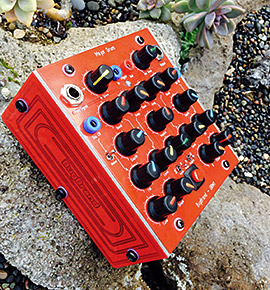
This research led me to BugBrand, a quirky English manufacturer of both modular synths and desktop formats (who also happens to be a top notch guy, not to be confused with The Bug, who I’ve been following since his first release in 1997, which is based on The Conversation, which is about a sound recordist…talk about circular references…). I had heard great things about, and from, his gear, especially a well-regarded but often-overlooked device called the DRM1 Major Drum. This filled a hole in my gear list: a dedicated all-analog, super-flexible drum synthesizer. And with a Tetrax Organ and a Low Gain Electronics UTL-1/2Â format converter, I could easily drive it from pretty much any source that output CV.
Hell, it even came in red, like my beloved Grendel Drone Commander.
In short, I picked one up, and am thoroughly enjoying it. It mixes well with other gear, especially if I’m rolling all-analog. It overdrives naturally, aesthetically, and quickly, lending itself to aggressive styles, but not limited to them. I especially like the ability to create rising or falling triggered envelopes via the “Bend” feature. Having two trigger inputs (three if you include the big red button) and CV control of both its oscillator and filter are great. I do wish the filter was steeper for more extreme sculpting of the noise generator, but you do get the choice of bandpass or lowpass/highpass (the latter switchable with an internal jumper) via a front-panel switch.
In all my research, though, I never really came across a single piece of media that really dove into its sound design abilities. While its tone can be varied a little based on the strength of the trigger signal it’s fed, it’s a single-voice synth, and no video demo or Soundcloud track really seemed to express its breadth of sound design possibilities.
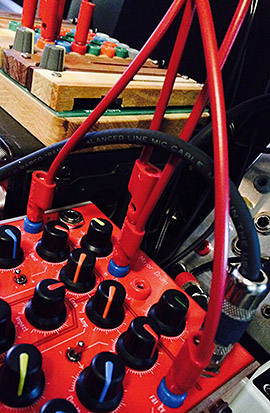 So, I decided to do something about it.
So, I decided to do something about it.
The sounds in today’s track are entirely made from the BugBrand DRM1. About half of the tracks are sequenced via the EHX 8-Step Program sequencer pedal (including the dubby melodic loop), and the rest are hand-edited, and one track features modulation form the Tetrax Organ’s touch pressure, and another using the Tetrax’s oscillators to drive the DRM1’s oscillator and filter. Effects include some delays, one reverb, and a bunch of high-pass and low-pass filters and EQ’s, with some compression on the output bus.
The sounds all have a very strong flavor, sharing a lot of timbral qualities, regardless of the function they serve in the mix. That can be good or bad, depending on what you’re after. But still, I think it’s impressive that this is all from a device with only one oscillator, one filter, and only three CV inputs. And this thing has a truly massive frequency range: its lowest pure tones drop to at least 20Hz, and it’s pretty easy to get spikes near or above 20kHz!
Pro tip: BugBrand products are tough to get a hold of, as Tom Bug doesn’t hold much inventory at any one time, so when he makes a production run, they sell out in a heartbeat. If you want to get in on Tom Bug’s next manufacturing runs/releases, get on his list.
[soundcloud url=”https://api.soundcloud.com/tracks/186445537″ params=”color=ff5500&auto_play=false&hide_related=false&show_comments=true&show_user=true&show_reposts=false” width=”100%” height=”166″ iframe=”true” /]
Tags: analogue, drum, electronic music, modular, music, sound design, synthesis | 1 Comment »
Posted: January 17th, 2015 | Author: Nathan | Filed under: music, news, synthesis
This blog is nearly six years old, and it’s time for a facelift!
You might notice that there is a new logo in the header of the website, and a few new fonts. Thanks to the design machinations of GergWerk, Noise Jockey now has a new visual identity and design system. Many thanks to Gerg and his hard werk…especially given that his client, your humble author, is a picky designer himself.
Expect a few visual tweaks over the next few weeks as the new identity works its way more fully into the website and other channels, like my Twitter and Soundcloud accounts.
In honor of the first visual change here since launch, I figured I’d post a little ditty that referred back to my first post, back in 2009: A short piece done on the Casio Magic Sound Dial SA-40 toy keyboard. It was multi-tracked, miked with Ye Olde Shure SM57, and run through a Red Panda Particle pedal as well as a few plug-in effects.
Here’s to new beginnings!
[soundcloud url=”https://api.soundcloud.com/tracks/186563283″ params=”color=ff5500&auto_play=false&hide_related=false&show_comments=true&show_user=true&show_reposts=false” width=”100%” height=”166″ iframe=”true” /]
| No Comments »
Posted: November 26th, 2014 | Author: Nathan | Filed under: music, sound design, synthesis

Letting my fingers do the walking, and talking, in Samplr for iOS.
A while back, Sonic State did a neat profile of Alessandro Cortini’s live synth setup for Nine Inch Nails, in which he described his use of a four-track cassette player as a mellotron. He’d record many, many repeating loops, one loop per track, and then use the mixing faders to fly out certain chords or drones. Pretty fun use of old technology.
In playing around with Samplr for iOS, it struck me that it could behave like a mellotron of sorts, too. Sure, Samplr (and other similar apps, like Curtis, csSpectral, and Sector) is great for mashing stuff up in an extreme way, but I decided if I could play it a bit more like a piano.
Since Samplr only slices samples into increments of four, I output a little more than two scales of a synth sound in G# minor. Then it was a simple as loading that sample in, selecting 16 slices, and then playing Samplr as a keyboard.
The results were odd, glitchy, loose, and interesting. I liked that I could hold chords while also dialing in reverb, delay, even playback loop length. The loop points were obvious, but at the right lengths and tempos, they can become rhythmic or simply textural. When playing single melodies, possible by dragging my finger between slices simulated piano runs. Then, inspired by Mr. Cortini’s solo albums, I decided to make a track with samples just from one single synth, played back from Samplr.
Today’s audio clip features a live recording in multiple passes. All of the sounds are from the TAL Bassline101, an amazing emulator of the Roland SH101. I output only two audio files, each with a unique patch but in the same pitch range and scale, and the rest of the variations are from Samplr.
[soundcloud url=”https://api.soundcloud.com/tracks/178303998″ params=”color=ff5500&auto_play=false&hide_related=false&show_comments=true&show_user=true&show_reposts=false” width=”100%” height=”166″ iframe=”true” /]
Tags: iPad, music, music 2014, software | No Comments »
Posted: October 27th, 2014 | Author: Nathan | Filed under: music, synthesis

Today’s track is comprised of several ominous improvisations with analog synths: Korg Volca Beats, Korg Volca Bass, Waldorf Pulse +, and Grendel Drone Commander. A couple of virtual analog software synths were also used to round things out in the edit.
Nice to get back into the pure subtractive synthesis world for a whole, in terms of sound design. I need to grow more hands if I’m to tweak this many knobs at once…
[soundcloud url=”https://api.soundcloud.com/tracks/173187112″ params=”color=ff5500&auto_play=false&hide_related=false&show_comments=true&show_user=true&show_reposts=false” width=”100%” height=”166″ iframe=”true” /]
Tags: analogue, audio equipment, music, music 2014 | No Comments »






 But what tools they are. Modular synthesizers are no longer relegated to the dustbin of history, nor an underground elite (as well documented in the excellent documentary,
But what tools they are. Modular synthesizers are no longer relegated to the dustbin of history, nor an underground elite (as well documented in the excellent documentary, 


 So, I decided to do something about it.
So, I decided to do something about it.
